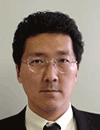Co-Located Conference AgendasAdvances in Biodetection & Biosensors | Advances in Microarray Technology | Lab-on-a-Chip European Congress | Single Cell Analysis Europe 2014 | 

Monday, 10 March 201408:00 | Registration | |
Next Generation Biosensors and Biodetection Techniques |
| | 08:30 |  | Keynote Presentation A Paradigm Shift in Biosensing: Label-Free Measurements in Free-solution
Darryl Bornhop, Professor, Vanderbilt University, United States of America
Back-scattering interferometry (BSI) can be used to detect and quantify a wide array of biological analytes, in complex matrices, at pM-fM levels, without labels or immobilization. It will be shown that these unique capabilities enable rapid, low sample consumption, biomarker validation and the potential for near-patient diagnostics. |
| 09:30 | Functional Colloids for Advanced Biosensing Techniques
Martin Mak, Research Fellow, Linkoping University, Sweden
Functional inorganic-biological materials with combined physiochemical and biological properties have attracted much attention for emerging applications including medical, diagnostics, catalysis, biofuel cells and nano-devices. Inorganic nanomaterials impart unique optical, electrochemical and magnetic characteristic; while biological materials provides specific bio-recognition capability, and offer excellent biocompatibility. Integration of various inorganic and biological materials into a one entity allows intimate contact and enhances the synergistic interactions between the hybrid materials. We will present the technology on design and fabrication of advanced hybrid inorganic-biological colloidal particle with tailored functions for biosensing applications. | 10:15 | Coffee and Networking in Exhibiton Hall | 10:45 |  | Keynote Presentation The Next Generation Self Monitoring of Blood Glucose (SMBG) and Continuous Glucose Monitoring (CGM)
Koji Sode, Chair, Tokyo University of Agriculture and Technology, Japan
The principle of the current commercial available glucose sensors for self monitoring of blood glucose (SMBG) and for continuous glucose monitoring (CGM) are based on either the 1st or the 2nd generation. Here, I present our challenge in the development of next generation SMBG and CGM based on the 3rd generation principle, that is the direct electron transfer technology. |
| 11:45 | Plasmonic Amplification for Fluorescence Biosensors
Jakub Dostalek, Researcher, Austrian Institute of Technology, Austria
Plasmon-enhanced fluorescence for amplification of fluorescence signal in assays will be discussed. Tailoring of this method enabling the analysis of protein biomarkers at low femtomolar concentrations and bacterial pathogens with 10 cfu/mL sensitivity will be reported.
| 12:30 | Lunch and Networking in Exhibition Hall | 12:45 | Poster Viewing Session | 13:00 |  Free Workshop Free Workshop
Takara Clontech Lunchtime Workshop - Improved cDNA Library Generation for Transcriptome Analysis from a Single Cell
,
| 14:00 | Novel Approaches for Labeless Electrochemical Immunosensors
Seamus Higson, Professor/Head, Cranfield University, United Kingdom
This talk will detail the development of a range of ultra-sensitive micro-electrode antibody based electrochemical biosensors with lower limits of detection down to pg ml-1; for, example, prostrate specific antigen as a marker for prostrate cancer, S-100, and myelin basic protein - as markers for transient ischemic attack (stroke) - and internalin B as a marker for Listeria. | 14:45 | Recent Trends and Applications of Nanomaterial-based Biosensing Systems
Arben Merkoçi, ICREA Professor and Director of the Nanobioelectronics & Biosensors Group, Institut Català de Nanociencia i Nanotecnologia (ICN2), Barcelona Institute of Science and Technology (BIST), Spain
Simple and low cost platforms which are easily handled in point of care diagnostics and based on nanomaterials (NM) will be described. They take advantage of both enhanced electrochemical / optical properties of NMs. In addition lab-on-a-chip platforms that integrate NMs, either as detector phase or as signaling labels to achieve very low detection limits with interest for diagnostics or environment monitoring, will be described. | 15:30 | Coffee and Networking in Exhibiton Hall | 16:00 | Bio Molecularly Imprinted Polymers for Sensing
Frieder Scheller, Professor, University of Potsdam, Germany
Molecularly imprinted polymers (MIPs) have the potential to substitute antibodies and enzymes as recognition elements in bioanalysis. They are stable at high temperatures and even in organic solvents. In the talk biomimetic sensors based on MIPs for the determination of drugs, antibiotics, sugars but also for enzymes and protein binders will be presented. | 16:45 | Thin Film Bulk Acoustic Resonator Biosensors with Femtogram Mass Sensitivity
Andrew Flewitt, Reader, Cambridge University, United Kingdom
Film bulk acoustic wave resonators (FBARs) have been shown to improve the sensitivity and detection limitation compared to other existing technologies, with the possibility of integrating an array of FBARs into existing electronics for control and data processing. However to date the usefulness of these sensors is limited to laboratories where environmental conditions, that are known to have an effect on the response of the sensors, can be tightly controlled. In this work, novel FBARs exhibiting two modes of resonance are presented. | 17:30 | Roundtable Discussion
Seamus Higson, Professor/Head, Cranfield University, United Kingdom
|
Tuesday, 11 March 2014 |
Next Generation Biosensors and Biodetection Techniques Cont'd |
| | 08:30 | Multiplexed Assays for Diagnostics and Environment
Loic Blum, Director, Universite Lyon 1, France
A multiplexed blood group genotyping system based on a classical 96-well plate with up to 200 spots per well was first developed associated with a colorimetric detection. Using an innovative immobilization process of biological elements on standard polymeric adhesive supports applicable to 96-, 384- and 1536-well micro-plates, various applications have been developed including multiplexed immunoassays for allergy diagnosis, detection of auto-antibodies against different tumor-associated antigens and pollutant sensing in water. In addition, a 96-well electrochemical method for the multiplexed monitoring of redox enzymatic reactions will be presented. | 09:15 | Nanoenvironment as an Amplifying Factor in Capacitive Immunoassays
Bo Mattiasson, Professor, Lund University, Sweden
Capacitive measurements with an affinity biosensor yields high sensitivity using direct registration of the binding event. A range of different analyses have been carried out with high sensitivity. Bacterial toxins, trace impurities in pharmaceutical production, specific bacterial nucleotide sequences are a few examples. | 10:00 | Coffee and Networking in Exhibiton Hall | 10:30 |  | Keynote Presentation Recent Advances in Biodetection
Christopher Lowe, Professor, University of Cambridge, Director, Cambridge Academy of Therapeutic Sciences, United Kingdom
The role of a biological detection capability is to acquire information on events and hazards to allow individuals and decision makers to manage risk, to indicate the presence of threats and hazards and, when and where required, classify, identify and quantify them. This presentation will review the biological challenge and the generic detection methodologies based on physical, chemical and biological properties that may be utilised to form an integrated biodetection system. Examples of optical, acoustic and microengineered technologies will be given. |
| |
Nucleic Acid Diagnostic Tests |
| | 11:30 | A Microfluidic Toolbox for Nucleic Acid Based Diagnostic Tests
Holger Becker, Chief Scientific Officer, Microfluidic ChipShop GmbH, Germany
As many biodetection assays, especially nucleic-acid based tests, require a more or less complex sample preparation protocol, microfluidics is seen as one of the key enabling technologies to realize the integration of these sample prep protocols with the detection scheme on a single device. We will present a toolbox-approach to this challenge and show examples from the molecular diagnostic, biothreat detection and food safety fields. | 12:15 | Lunch and Networking in Exhibition Hall | 13:30 | Poster Viewing Session | 14:00 | Mediator Probe PCR - Principle, Applications and Guidelines for Primer and Probe Design
Felix Von Stetten, Head, HSG IMIT, Germany
Mediator probe PCR is an alternative to established sequence-specific fluorogenic probe based real-time PCRs. Detection relies on label-free primary probes and secondary universal fluorogenic reporters that can be synthesized at decreased cost. Guidelines for probe design and applications for detection of HPV18, influenza B virus, and HAdV B7 are presented. | 14:45 | Improvements in Molecular Diagnosis of Pathogens and Diseases
Panagiotis Karanis, Professor and Director, Qinghai University, Germany
This presentation will offer a valuable guide to the development of LAMP in molecular detection and determination of target sequences and will present examples with bright field applications of the method from the detection of pathogens to clinical applications for the diagnosis of cancer and other disorders according to current stage of this well-accepted methodology by the scientific community during the last decade. | 15:30 | Coffee and Networking in Exhibiton Hall | |
Point of Care and Field Ready Pathogen Detection Devices |
| | 16:00 | Advances in Volatile Analyses for Disease Diagnosis
Norman Ratcliffe, Professor, University of the West of England, United Kingdom
Volatile analyses for disease diagnoses is an emerging science. This is due to several factors such as improved, sensitive analytical technology and the non invasive nature of the test procedures. It is not only humans, but animals which could benefit by this approach. This lecture will review the past, present and will explore the future of spectrometers, electronic noses and other technologies for analysing breath, saliva, skin, stool and urine for diagnosing diseases using volatile detection. | 16:45 | Close of Conference |
|


 Add to Calendar ▼2014-03-10 00:00:002014-03-11 00:00:00Europe/LondonAdvances in Biodetection and BiosensorsAdvances in Biodetection and Biosensors in Berlin, GermanyBerlin, GermanySELECTBIOenquiries@selectbiosciences.com
Add to Calendar ▼2014-03-10 00:00:002014-03-11 00:00:00Europe/LondonAdvances in Biodetection and BiosensorsAdvances in Biodetection and Biosensors in Berlin, GermanyBerlin, GermanySELECTBIOenquiries@selectbiosciences.com